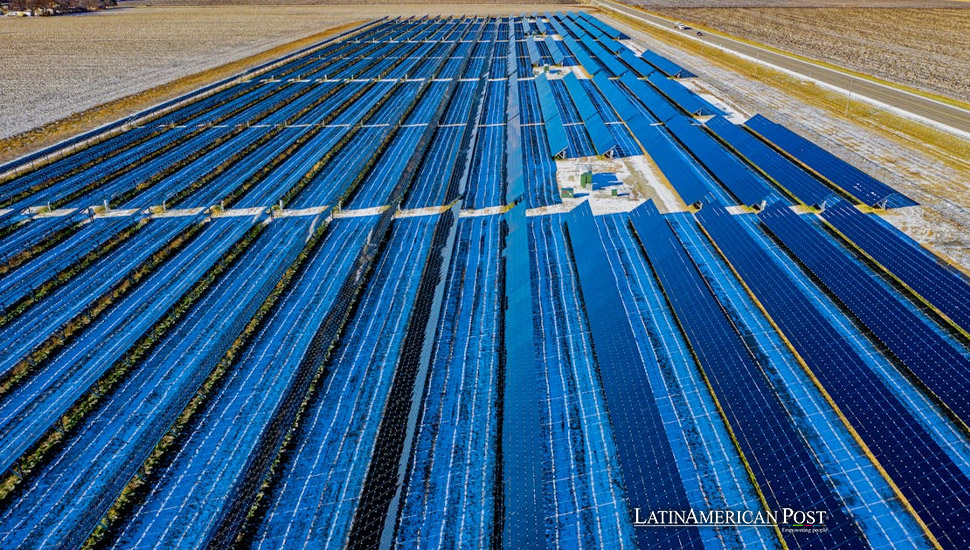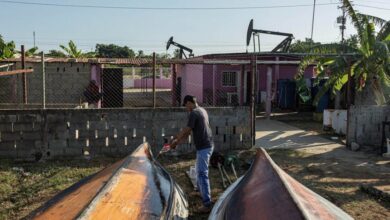Paraguay’s Bold Energy Vision: Shifting to Renewables by 2050

Paraguay has launched an ambitious energy policy, targeting a diverse, sustainable energy mix by 2050. Focusing on solar, hydrogen fuel, and biofuels, the country aims to secure energy independence and reduce reliance on hydrocarbons.
A Pioneering Energy Strategy for Paraguay
The Paraguayan government unveiled a transformative energy policy to reshape the country’s energy landscape by 2050. Signed into action by President Santiago Peña, this initiative sets the stage for Paraguay to diversify its energy generation and embrace sustainable alternatives such as solar energy, hydrogen fuel, and biofuels. The decree, officially titled 2.553/24, is a critical step in Paraguay’s vision to reduce its dependency on hydrocarbons and align with global energy transition efforts.
The government’s decision follows a comprehensive review of the nation’s energy sector, identifying nearly 300 long-term goals to ensure Paraguay’s energy security. Mauricio Bejarano, Vice Minister of Mines and Energy, emphasized that these objectives are not merely aspirational but part of a robust plan to prepare the country for future energy demands.
“To achieve energy security, we are committed to diversifying our generation matrix,” Bejarano said, signaling the government’s commitment to transitioning from traditional energy sources to a broader mix of renewable and alternative energies. The policy is expected to enhance Paraguay’s energy resilience, foster innovation, and contribute to global sustainability goals.
Introducing Solar and Bioenergy
Paraguay has long been known for its reliance on renewable energy. Nearly 100% of its electricity is generated from hydropower, mainly through the Itaipu and Yacyretá dams. While this provides a solid foundation for clean energy, the government recognizes the need to broaden its energy portfolio to ensure long-term sustainability and meet growing demands.
The new energy policy marks a significant shift in focus, with plans to introduce solar power and bioenergy into the national energy mix. Solar energy, in particular, is seen as a vital addition, taking advantage of Paraguay’s abundant sunlight to reduce pressure on its hydropower resources. The government also plans to harness bioenergy through biomass and biogases, tapping into organic waste and agricultural byproducts as fuel sources.
Bejarano noted that one key strategy is to reduce the country’s consumption of hydrocarbons primarily used in transportation. By promoting biofuels, Paraguay aims to cut carbon emissions and reduce its reliance on imported fossil fuels. The shift toward biofuels is part of a broader “energy transition” that the government sees as crucial to modernizing the country’s energy infrastructure.
“We aim to reduce hydrocarbon consumption, which is why we focus on biofuels,” Bejarano explained. This will allow Paraguay to move closer to its decarbonization goals while promoting energy independence.
Hydrogen as the Future of Paraguay’s Energy Exports
A critical component of Paraguay’s energy vision is hydrogen fuel production. The country’s rivers, especially the Paraná and Paraguay, are vital trade routes and key to the country’s energy strategy. Approximately 80% of Paraguay’s foreign trade passes through these rivers, providing a direct link to the Atlantic Ocean. The government aims to “decarbonize the waterway” by promoting hydrogen-based fuels for ships and other transport vessels operating along these routes.
Hydrogen fuel has been hailed as a game-changer in the global energy transition due to its potential as a clean and abundant energy source. Paraguay aims to position itself as a regional leader in hydrogen production, providing a sustainable alternative to the fossil fuels currently used in transportation and industrial processes.
The government’s long-term plan includes developing infrastructure to produce and distribute hydrogen fuel on a large scale. This would benefit domestic industries and open up new opportunities for energy exports, potentially turning Paraguay into a hub for hydrogen fuel in Latin America.
“Hydrogen is the future,” Bejarano stated, highlighting the country’s ambitions to develop hydrogen-based energy solutions over the next few decades. This focus on innovation aligns with global trends and sets Paraguay on a path to becoming a key player in the renewable energy market.
Gas Integration and the Trinational Pipeline
In addition to its focus on renewables, Paraguay is also looking to natural gas as a transitional energy source. The country’s new energy policy includes a project to integrate natural gas into its energy matrix. This would provide a reliable alternative to hydrocarbons while renewable technologies continue to scale.
One of the most ambitious projects is the proposed transitional gas pipeline, connecting Paraguay to Argentina’s vast Vaca Muerta shale formation, the world’s second-largest reserve of unconventional gas. The pipeline would stretch for approximately 530 kilometers through Paraguay’s Chaco region, linking Argentina’s gas fields with Brazil. Paraguay would benefit from transit fees and access to a more stable energy supply.
The pipeline represents a significant opportunity for Paraguay, which currently has limited domestic gas production. Not only would it secure access to natural gas at competitive prices, but it would also stimulate exploration and development of the country’s own gas resources. Bejarano emphasized that the pipeline project is expected to boost investment in Paraguay’s energy sector and strengthen regional energy cooperation.
“With this project, we are looking to enhance natural gas exploration in Paraguay,” Bejarano said, noting that the pipeline would also foster greater energy integration across Latin America.
While natural gas is not a renewable resource, it is seen as a critical bridge in the transition to cleaner energy. By relying on natural gas in the short term, Paraguay can reduce its dependence on coal and oil while ramping up its investments in solar, hydrogen, and bioenergy.
Paraguay’s ambitious energy policy is a bold step toward a more sustainable future, but it also comes with challenges. The transition to a diversified energy matrix will require significant investment in infrastructure, research, and development. Additionally, the country will need to foster partnerships with international investors and energy companies to bring its vision to life.
One of the key challenges will be ensuring that the benefits of the energy transition are shared equitably across society. While urban areas may be quicker to adopt new technologies like solar panels or electric vehicles, rural communities could face greater barriers to access. The government has pledged to address these disparities by investing in energy infrastructure in remote areas and providing incentives for small businesses and households to adopt renewable technologies.
At the same time, Paraguay’s reliance on hydropower, while advantageous, also poses a risk. Climate change is expected to increase the frequency of droughts, which could threaten the country’s hydroelectric dams. This makes the diversification of the energy matrix all the more urgent.
Nevertheless, Paraguay’s energy transition also presents significant opportunities. By becoming a leader in renewable energy, the country can reduce its dependence on imported fossil fuels, create new jobs in the green economy, and position itself as an exporter of clean energy technologies. The move toward hydrogen fuel, in particular, could open up new markets and revenue streams, allowing Paraguay to play a key role in the global fight against climate change.
Bejarano remains optimistic about the country’s energy future. “We are not just thinking about the next few years—we are thinking about the next few decades,” he said. “This policy will lay the foundation for a sustainable, prosperous future for Paraguay.”
Paraguay’s Vision for a Renewable Future
Paraguay’s new energy policy is a testament to the country’s commitment to sustainability and energy independence. By focusing on renewable energy sources like solar, hydrogen, and biofuels, the government is laying the groundwork for a greener, more resilient future. The country’s leadership in the energy transition could serve as a model for other nations in Latin America and beyond, demonstrating that with vision and innovation, even the most challenging energy problems can be overcome.
Also read: Paraguay Protests Call for Employment and Social Reform
As Paraguay moves forward with its ambitious plan, the world will be watching. The country’s success in diversifying its energy matrix and reducing its reliance on hydrocarbons could have far-reaching implications, not just for the region, but for the global energy landscape. The future of energy in Paraguay is bright—and it is powered by the sun, the wind, and the innovative spirit of its people.




